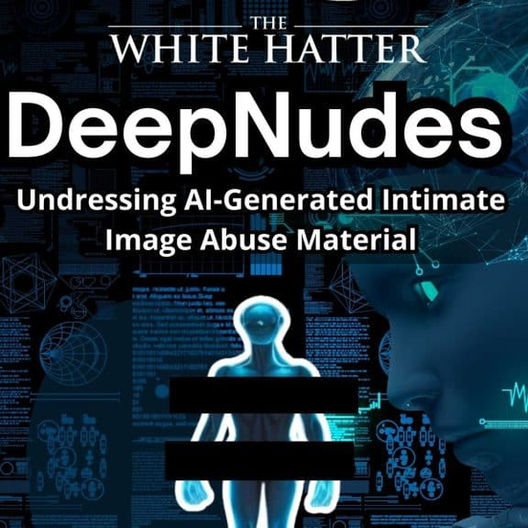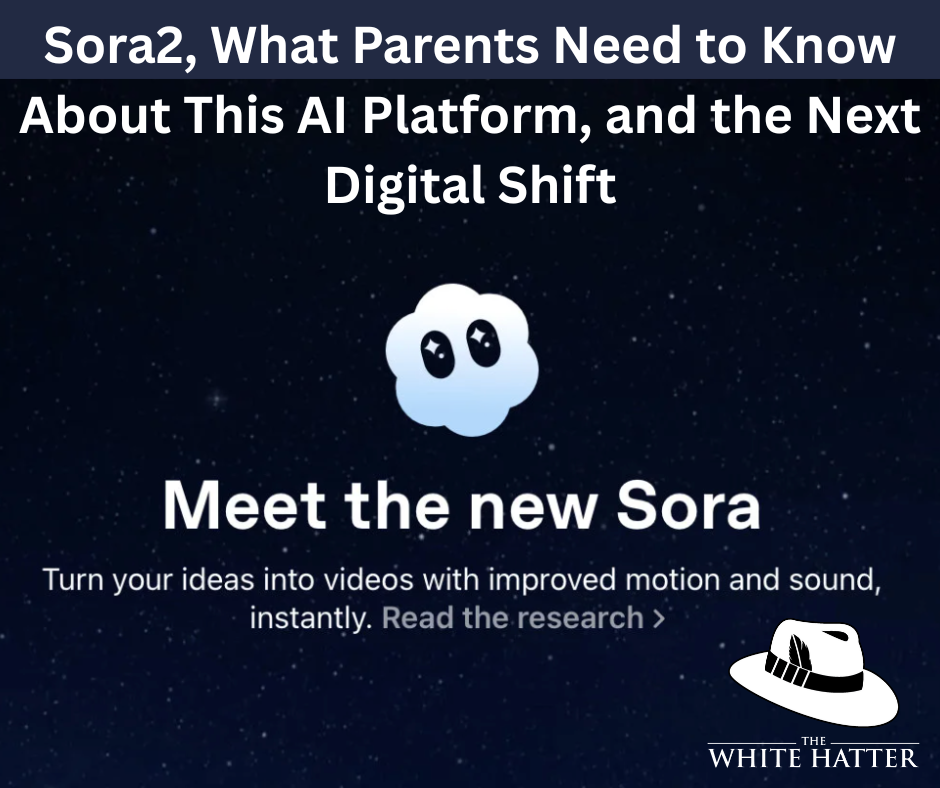A Tutor, a Tool, or a Trap: Raising AI Ready Youth and Teens
- The White Hatter

- 35 minutes ago
- 4 min read

We are genuinely excited about the many benefits AI can offer, but we’re also mindful of its challenges, and it’s important to recognize that both can be true at the same time.
However, we believe that the next couple of years will reveal the character of this new relationship between youth, teens, and artificial intelligence (AI). Will it be one of empowerment where AI is used as a wise tutor and creative partner, or will it be one of dependency, where emotional outsourcing stunts growth? Here at the White Hatter, we believe the answer depends on the conversations and values we build into family life and education today.
Artificial intelligence is no longer confined to labs or science fiction. It now lives in our homes, classrooms, and in the technology our kids are using today. Apps that can write, draw, teach, and even “listen”, and are shaping how young people think, learn, play, and form relationships. For Generation Alpha and the generation following them, AI isn’t an abstract tool, it’s a companion, collaborator, and sometimes a personal confidant.
Just as the internet reshaped our world, artificial intelligence is poised to be even more transformative. Whether it becomes a force for empowerment or dependency will depend on how we, as parents, caregivers, and educators, help guide the next generation through it. History reminds us that we can’t rely on the developers of these technologies to safeguard our children’s well-being, that responsibility rests with parents, caregivers, and educators. This is an inconvenient truth that some do not want to accept, because again, history shows us that if we wait for government to pass legislation to rein in these companies, it will be too late given how technology is advancing faster than our child protection laws can adapt to.
Yes, youth and teens must never be collateral damage in this AI race for innovation. We should continue pushing lawmakers to hold technology companies accountable through legislation that makes child protection a core part of AI design, not an afterthought or a public relations checkbox. Every AI model, feature, and release should undergo comprehensive child safety risk assessments, ethical reviews, and independent oversight before being made public. Still, if history is any indication, and considering the global race toward advanced AI and competing state interests, achieving this level of accountability will remain a significant challenge in our opinion.
AI is evolving faster than most school curricula or parenting guides can keep up with. Yet the adults in a child’s life are still the most important influence in how they interpret and use technology. Staying abreast of AI’s rapid changes isn’t about chasing every new app, it’s about understanding the social, emotional, and ethical forces shaping youth today. This is what we will continue to concentrate on here at the White Hatter.
Artificial intelligence systems are not neutral. They teach habits and values through design such as what they reward, what they hide, and what they make effortless. Parents and educators who understand these systems are better equipped to ask critical questions, set meaningful boundaries, and model the kind of digital citizenship young people need.
The goal is not to fear AI, but to ensure that empathy, curiosity, and creativity stay at the centre of how youth engage with these AI tools.
AI can be a tutor, a tool, or a trap, depending on how it’s used. Youth and teens need adults who help them pause and ask, “What am I using this for?” Is it to learn something new, to express creativity, to connect with others, or just to fill time and avoid effort?
When youth understand the why behind a tool, they use it intentionally rather than habitually.
Making this reflection part of family life helps kids become mindful users rather than passive consumers. It turns every app or chatbot into a learning opportunity instead of an escape from thinking.
Artificial intelligence appears flawless, it never forgets, it never gets tired, and never feels embarrassed. But human growth depends on frustration, failure, and trying again.
If young people grow up expecting perfection from technology, could they begin to see human effort as flawed or unnecessary? That’s why it’s vital to normalize imperfection at home and in the classroom. Talk about mistakes as part of learning. Celebrate persistence, not just precision.
When adults model resilience and humility, they remind youth that being human is not about getting everything right, it’s about growing through what’s hard and learning from mistakes.
Many of today’s AI systems simulate empathy with uncanny accuracy. Companionship apps, tutoring bots, and AI “friends” respond warmly, listen endlessly, and never argue. For youth and teens who feel isolated, that can be comforting, but it’s also misleading. AI doesn’t feel, it mirrors!
If a child begins turning to AI for comfort or validation, they risk skipping the emotional work that real relationships demand such as patience, misunderstanding, forgiveness, and growth.
That’s why emotional dialogue must stay human. Ask your child about their day, their friendships, and their frustrations before AI becomes their default listener.
When children feel genuinely heard by adults, they’re far less likely to outsource empathy to a machine.
AI will shape our children, but our children are also shaping AI. Their choices, conversations, and creative outputs help train these systems every day. That means the design patterns and cultural norms we accept now will echo in the next generation of technology.
Parents, caregivers, and educators who stay informed and engaged can ensure that AI becomes a partner in learning, not a replacement for thinking or feeling. The more we understand the technology, the better we can help youth see it for what it is, a tool for empowerment, not an escape from effort or emotion.
The question isn’t whether our kids will grow up with AI, they already are. The real question is how they will grow up with it.
Be your child’s AI digital sheepdog.
Digital Food for Thought
The White Hatter
Facts Not Fear, Facts Not Emotions, Enlighten Not Frighten, Know Tech Not No Tech.














